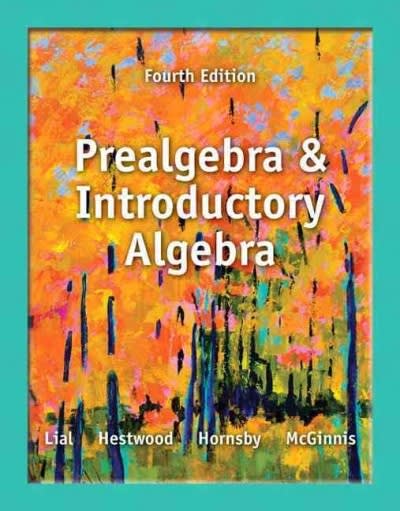Question
NCAA Class Madness Scheduling - 2022 Version (Z.1) Each year, there are many complaints about how the NCAA Men's Basketball Committee seeds and schedules teams
NCAA Class Madness Scheduling - 2022 Version (Z.1)
Each year, there are many complaints about how the NCAA Men's Basketball Committee seeds and schedules teams in the 68-team single elimination tournament to determine the National Champion. It is inevitable that somebody is unhappy. We will approach a portion of the task by using our modeling skills to generate an alternative schedule that will likely differ from the actual assignments. Your task is threefold - 1&2) generate two similar models that "solves" the situation using OUR parameters (which is basic scheduling common sense IMO) and then 3) complete thorough comparison of the actual tournament assignments and the results of your model solutions.
The task:Make a LP model that will assign teams to regions. You will be using only the top 24 teams (the #1 thru #6 seeds) and all 4 regions. The objective of your first model for assigning teams will be to minimize the overall sum of distance from the location of each team to their assigned region. Your second solution will be a multi-objective approach where you minimize the Seed #1 distances first, then the Seed #2 distances, etc. down to finally minimizing the Seed #6 distances. See the video for more details. Distance data is provided on a separate spreadsheet.
The restrictions for team assignment to regions follow below.These are in the spirit of common sense and the NCAA tournament committee 'rules', but more much holistic then their "micro" approaches.
1) Each of the four regions (West - San Francisco, South - San Antonio, East - Philadelphia, Midwest - Chicago) will have exactly one #1 seed assigned, exactly one #2 seed assigned, exactly one #3 assigned, exactly one #4 assigned, exactly one #5 assigned and exactly one #6 assigned.
2) Teams from the same conference cannot be assigned to the same region (unless there are more than 4 teams from the same conference - the SEC in our case). Conferences are shown on the data file (it is a team attribute).Also, don't worry about conferences that do not have multiple teams (i.e., IGNORE THEM!!!).
For the SEC - make sure each region has at least 1 SEC team, but no more than 2 SEC teams assigned.
3) The "too-close" rule - a loose adaptation of a true NCAA rule. Do not allow St. Mary's to be assigned to the West region. But it is okay to allow (not force) Villanova to be assigned to the East region. I can explain further if this bothers you in any way.
4) "Marquee" Value - "Q" -There are 9 teams that have a "Q" factor - they are either marquee teams or teams that have captured the interest of the basketball fanbase because of some unique aspect of the team. This is scaled on a value of 1-10 (the value of which isn't relevant to us - just whether or not it is a marquee team). Each Region must have at least 2 teams that have a Q factor.
Part A - THE MODEL #1 - Implement an appropriate linear programming model that assigns the 24 teams to Regions, minimizing the sum of overall distances subject to the items listed above. Suggestion: Attack modularly AND model efficiently. What do we mean 'efficiently'? If you are a little sloppy with your constraints, or include unnecessary or duplicative constraints, you may exceed the 100-constraint limit imposed by the Solver. Model carefully.
Part B - THE MODEL #2 - Implement an appropriate linear programming model that assigns the 24 teams to Regions subject to the items listed above while sequentially in multi-objective form minimizes the distance first of Seed #1, then Seed #2, etc. down to Seed #6.
Part C - THE COMPARISON: Compare your two solutions to the NCAA's assignments. Keep in mind neither model is necessarily 'better' and each approach is using different criteria. NOTE:Don't just forget this part. At least 20% of your grade will be based on a thorough comparison of your model solution to the NCAA actual bracket.
Specifically, measure the following for both of your solutions and the actual assignments (obviously, only the 24 teams of interest).
- Miles overall and individually for the #1 seeds, #2 seeds, #3 seeds, #4 seeds, #5 seeds, and #6 seeds.
- The number of regions where multiple teams from the same conference are assigned (do not consider the SEC). (Both of your solutions should have a measure of "0").
- The number of regions where the SEC assignments (at least 1 but no more than 2) are violated (Both of your solution should have a measure of '0').
- The number of regions that do NOT satisfy the minimum number of marquee teams' requirement (Both of your solution should have a measure of '0').
A simple summary of the team assignments in a nice understandable format would also be helpful. And any short comments on what you see in comparing the three solutions.
The data file shows the actual NCAA assignments - in yellow.

Step by Step Solution
There are 3 Steps involved in it
Step: 1

Get Instant Access to Expert-Tailored Solutions
See step-by-step solutions with expert insights and AI powered tools for academic success
Step: 2

Step: 3

Ace Your Homework with AI
Get the answers you need in no time with our AI-driven, step-by-step assistance
Get Started


